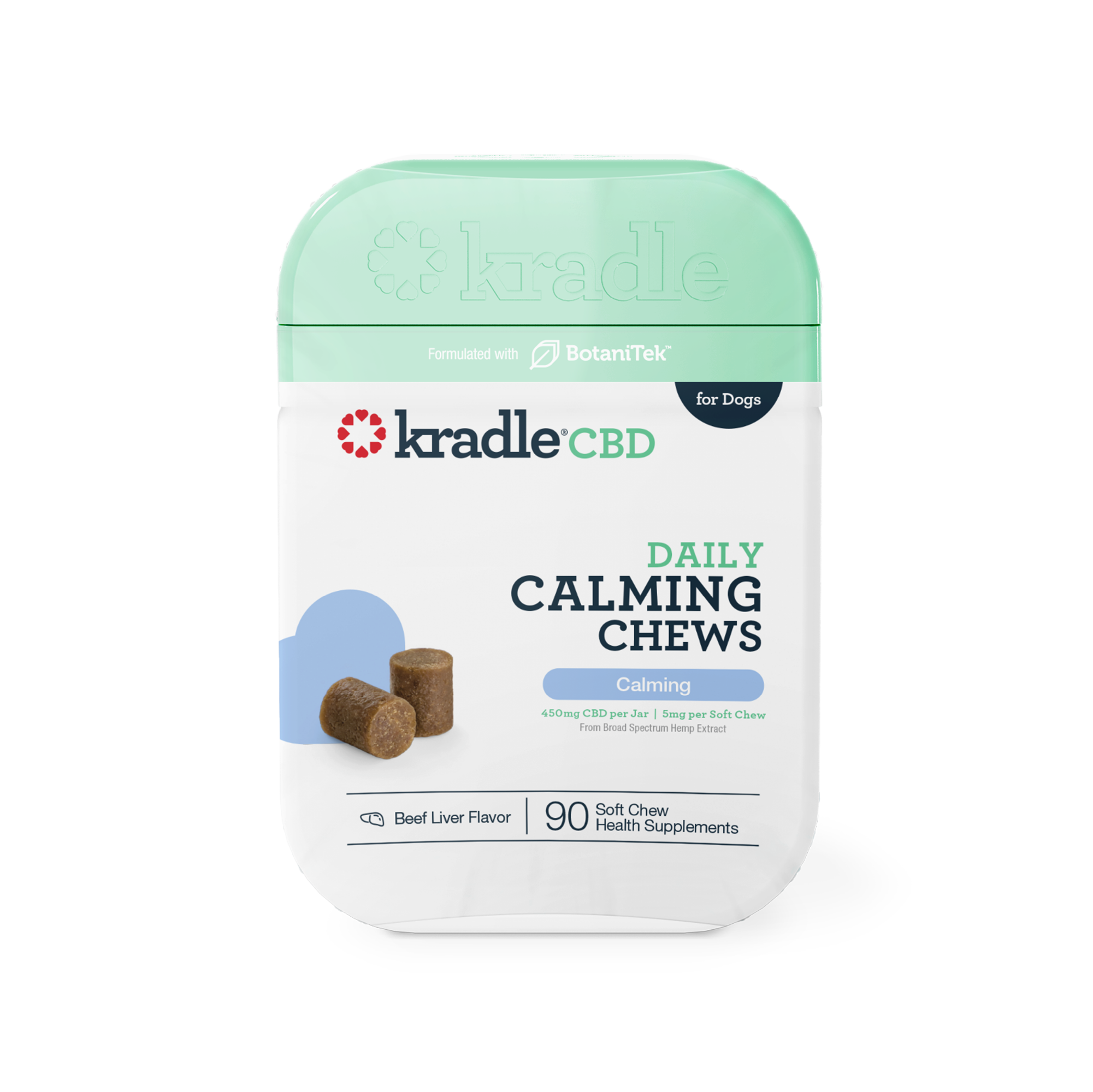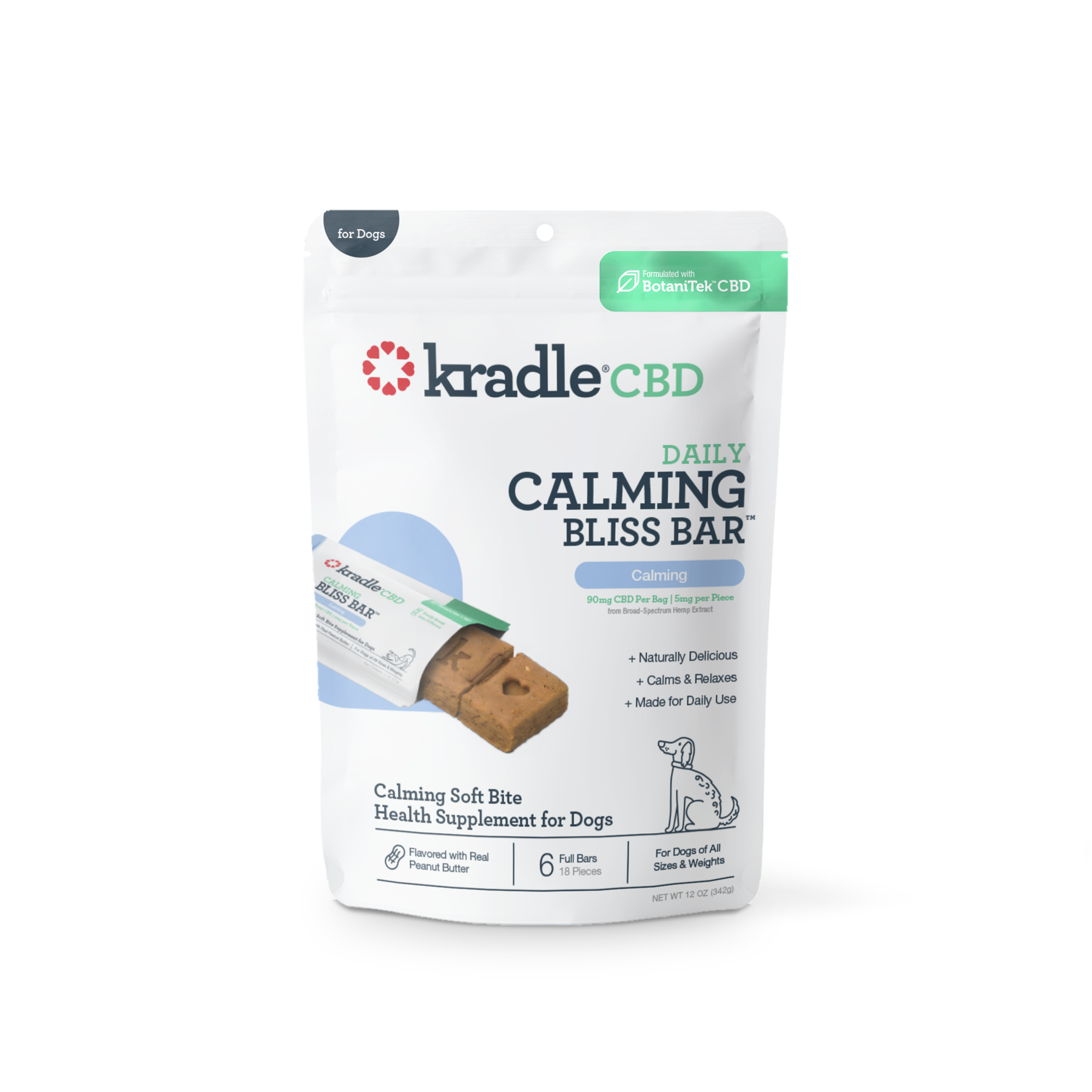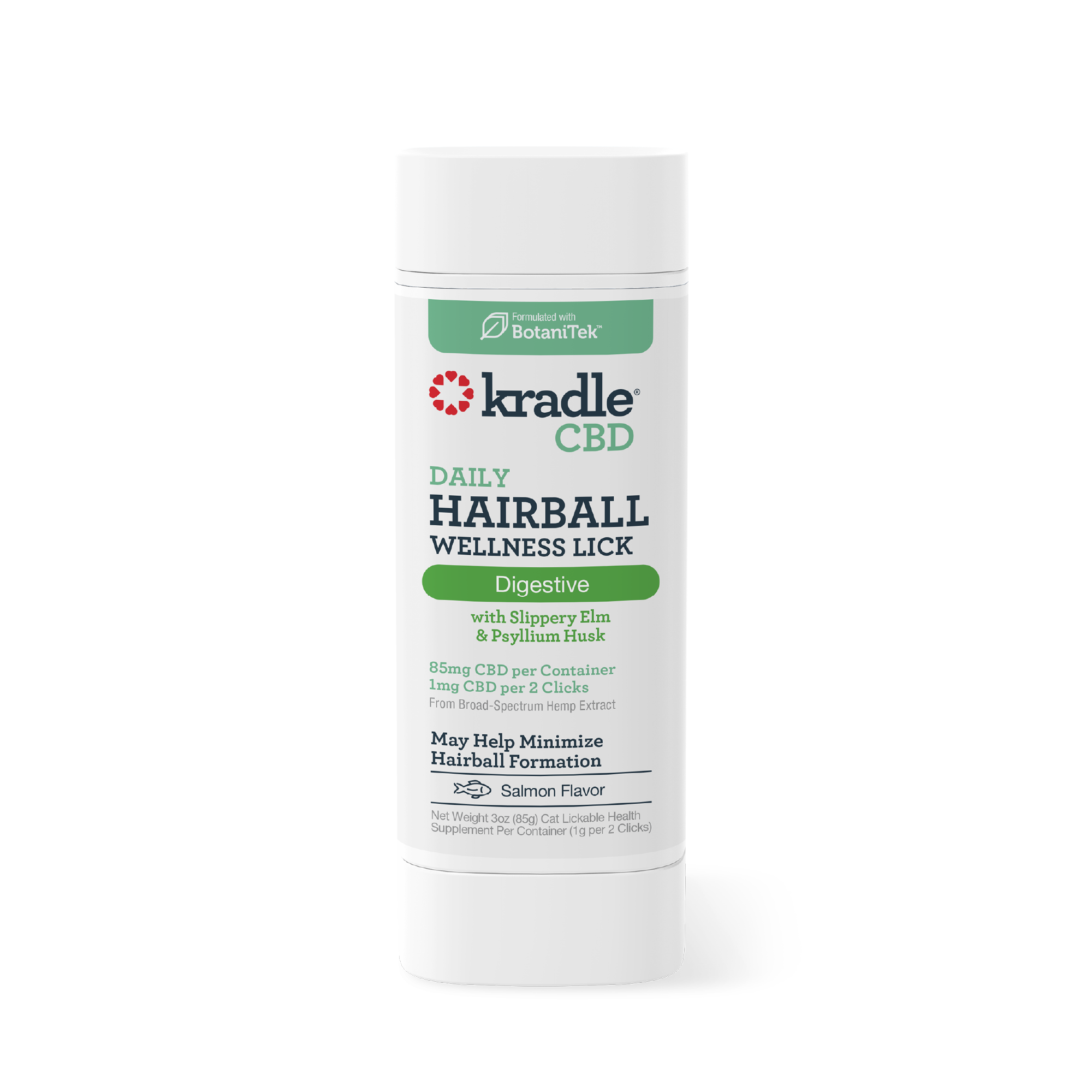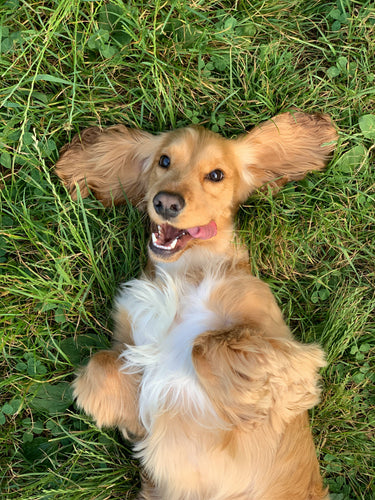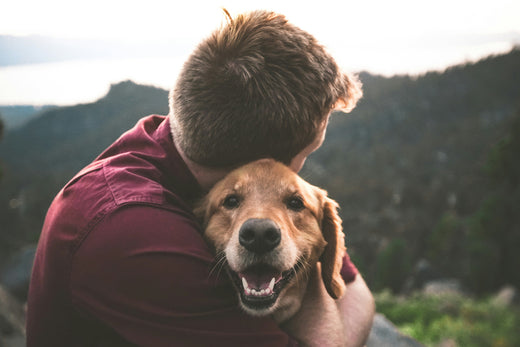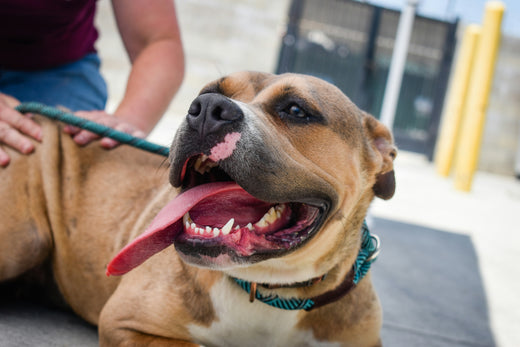
Tell-Tail Signs: Understanding Your Dog's Mood & Health
Your dog may not be able to use words to tell you how they're feeling, but your pet speaks to you in other ways. Dog body language and behaviors can help you read their mood and signal when they're experiencing a health problem, anxiety or stress. Observation is key, and this guide will teach you how to read dog body language and dog behaviors to catch subtle mood and health signals and respond to them as needed to keep your dog healthy and happy.
Body Language to Keep an Eye Out For
Body language with dogs involves the head, tail and overall posture. Let's take a look at how to interpret each type of body language.
Head Position
How your dog holds their head can give you insight into how they're feeling. Some common head positions include:
- Tilting: When your dog tilts their head, they're showing interest in something. They may be curious about what they're seeing or concentrating on it.
- Bowing: If your dog bows their head, they may be trying to avoid a confrontation. As a result, head bowing is often stressed dog body language.
- Mouth hanging open: Dogs often let their mouths hang open when they're feeling relaxed. However, if your dog's tongue is hanging out of their open mouth, they may be experiencing stress, feeling overheated or dealing with a health problem like nasal congestion. Heavy panting with an open mouth unrelated to exercise may also be a warning sign of a medical concern. Find out more about why dogs pant at night.
-
Holding head high: Most often, a high head position means that a dog is feeling relaxed, but if the rest of your dog's body is tense and rigid, the head position may indicate that they're feeling stressed.
Tail Position
Your dog's tail position and movement may also be trying to tell you something. Here are some common tail positions and movements and what they mean:
- Vigorous tail wagging: When your dog wags their tail and moves their posterior at the same time, they are likely feeling happy and engaged. Dogs will often exhibit this behavior when they're ready to play or when greeting you at the door.
- Isolated tail wagging: If your dog's tail is moving, but the rest of their body is rigid, they may be feeling stressed or anxious.
- Low tail position: When trying to avoid a confrontation in a stressful situation, dogs will often hold their tails low or tuck them between their legs.
- High tail position: A high tail position usually means that a dog is on alert. If the rest of their body seems relaxed, they're likely curious about something or preparing for play. A rigid body paired with a high tail may mean they're bracing themselves for a fight.
Body Posture
Body posture and position can help reveal what your dog is feeling. Some body positions you're likely to see include:
- Raised hackles: When the hair on your dog's shoulders and spine becomes raised, they are usually experiencing feelings of fear, stress or anxiety. Learn more about puppy fear stages here.
- Bowing: Leaning down on their front elbows while keeping their hindquarters raised typically means that a dog is inviting you or a furry friend to play.
- Cowering: If your dog gets low to the ground and seems to be trying to make themself look small, they may be anxious, stressed or not feeling well.
- Rolling over: Usually, when a dog rolls over and bears their belly, they're feeling relaxed and asking for your attention. However, if your dog's body looks stiff when they roll, give them some space as they may be feeling overstimulated or anxious.
- Stiffness: As previously mentioned, a stiff or rigid body is typically negative body language, a sign that your dog is on alert due to fear, stress or anxiety.
Specific Behaviors to Watch Out For
Dogs exhibit a wide range of behaviors. Many of them are normal, but some of them can indicate mood issues or health problems. Being able to distinguish between the two is Dog Behavior 101. Some common behaviors include:
- Yawning when tired
- Lip licking before or after a meal
- Smiling
- Baring teeth when needing space
- Trembling in response to cold temperatures
- Shaking off when wet
- Spinning when playing or excited
- Barking and whining to communicate
- Panting during physical activity
Uncommon behaviors that signal it may be time to help your dog calm down or schedule an appointment with the vet include:
- Frequent yawning not related to fatigue
- Lethargy or lack of interest in people or activities
- Lip licking unrelated to mealtime
- Trembling unrelated to cold
- Excessive panting
- Shaking head and body when not wet
- Persistent, compulsive spinning
- Excessive pacing
- Excessive or unusual barking or whining
- Unexplained aggression
When to Call A Vet
Anytime you have a question about a behavior, body language or how your pet is positioned, talk to your vet about your concerns. While there are similarities in how dogs communicate, each pooch has their own personality, habits and behaviors. As a result, any change in behavior or body language could indicate a concern, so don't be afraid to contact your vet with questions. Also, be sure to seek emergency medical attention if your dog displays symptoms like difficulty breathing, not eating or drinking, or having a seizure.
How Kradle Can Help
Now that you've had the intricacies of dog body language and dog behavior explained, you'll be able to keep a closer eye on your pet and interpret what they're trying to tell you about their mood and health. Not only will understanding dog body language and behavior help you seek care when your pet needs it, but close observation can also put you more in tune with your pet and strengthen your bond. Keeping your lines of communication open can deepen your relationship with your pet, setting both of you up for happier days. When you do notice signs of stress in your dog, Kradle is here to help with our full line of CBD and calming products. Learn more about our full lineup and discover the solutions that are right for your pet and for you.

